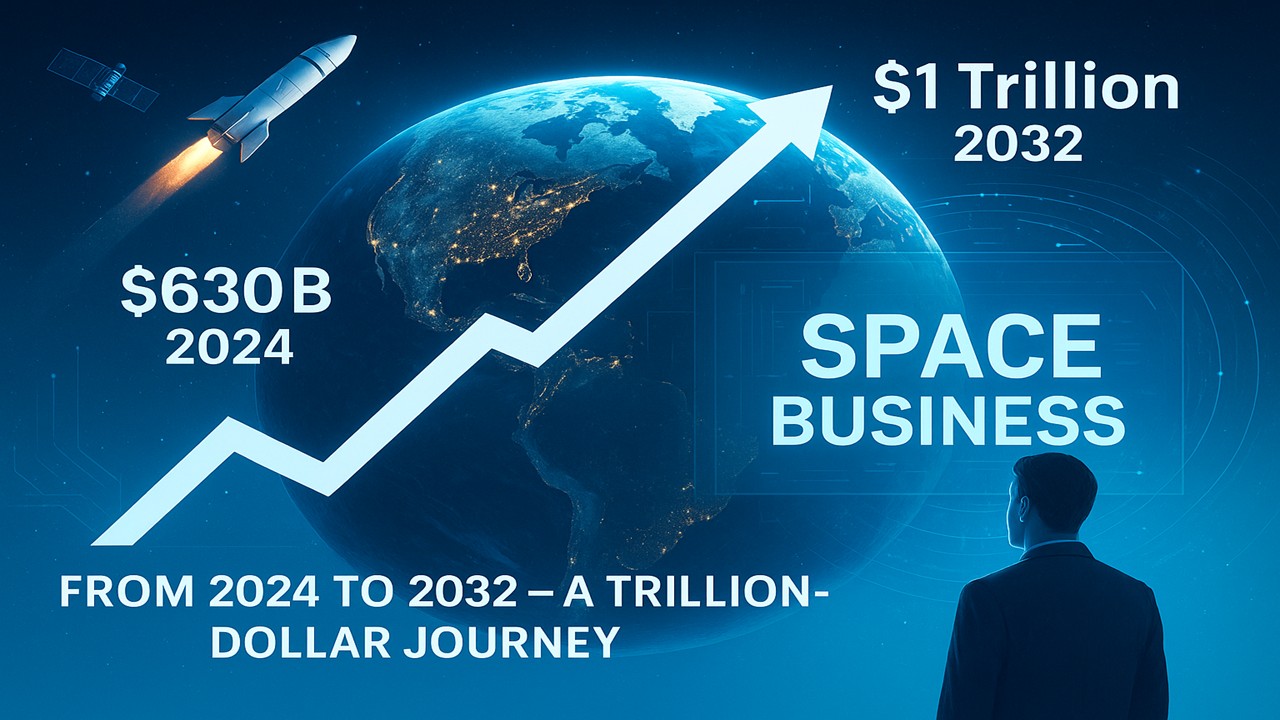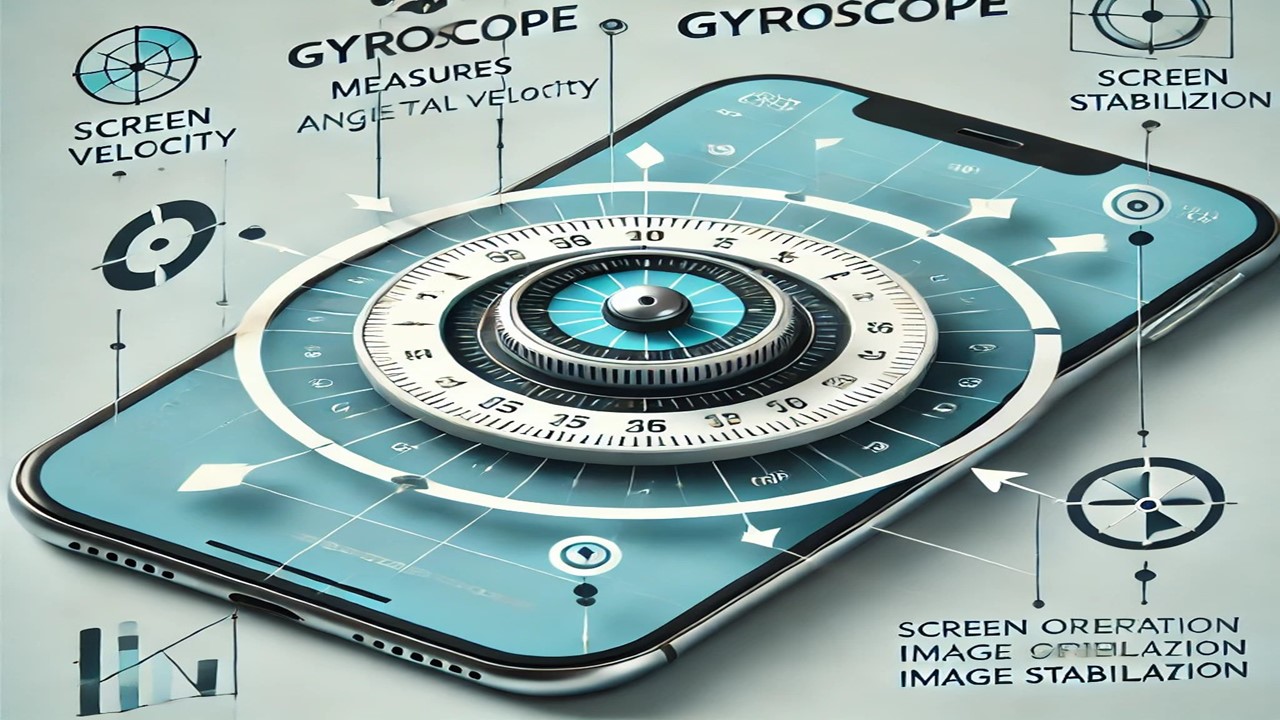
We are living in an era driven by technology and industrial growth. Every field is witnessing rapid progress — whether it’s Artificial Intelligence (AI), electric vehicles, clean energy, or biotechnology. And now, humans are not just looking at opportunities on Earth but beyond — into space. One such industry that is quietly but powerfully rising is the space economy.
What Does the Latest Report Say?
According to the 2024 Space Foundation report, the global space economy has now reached $613 billion (approx. ₹51 lakh crore).
In 2023, this figure was $570 billion,
which means a 7.8% increase in just one year.
This is not just a sign of growing investment and technology but also a clear indication that the space industry is no longer limited to scientific exploration — it is becoming a global economic powerhouse.
What is the Space Economy?
The space economy refers to all the products, services, and technologies that either operate in space or bring benefits to Earth using space-based systems.
Examples include:
- Satellite TV and GPS
- Weather monitoring satellites
- Rocket launch companies
- Research and production missions in space
Defense and military space technologies
The Rise of the Commercial Sector in Space Economy
While government agencies still play a role in the space economy, the real revolution is being driven by commercial companies. Earlier, the sector was dominated by government players like NASA, ISRO, or Roscosmos. But now, companies like SpaceX, Amazon (Kuiper), and OneWeb have completely transformed the space industry.
Today, the majority of contributions are coming from private companies, while the government share has decreased significantly.
You can understand it better through this table:
| Sector | Contribution (in USD) | Percentage (%) |
| Commercial Sector | $481 Billion | 78% |
| Government Funding | $132 Billion | 22% |
What does this mean?
- 78% of the space economy is now driven by commercial companies that are handling satellite launches, internet services, data analytics, and space tourism.
- Governments still contribute 22%, mainly for defense, space research, and monitoring.
This shift proves that space is no longer just a domain of scientific exploration but a multi-billion-dollar business platform.
Record-Breaking Satellite Launches in 2024
With the rapid development in the space sector, the number of launches has also grown dramatically. In just the first 6 months of 2024, there were 149 space launches — a historic record.
The Stats:
- Total Launches: 149 (Jan–Jun 2024)
- Average: One launch every 28 hours
- Of these, 81 launches were by SpaceX alone
What does this signify?
Space launches are no longer rare events. What used to be a major occasion is now a routine operation. This brings several implications:
More Satellites:
Both companies and governments are launching more small and large satellites regularly.
More Data:
Each satellite is contributing to data collection, internet connectivity, weather updates, and security applications.
More Commercial Use:
Space is no longer used only for science or defense — now it supports telecommunications, broadcasting, internet services, and even precision agriculture.
More competition and investment is coming into this sector, making it poised for even faster growth in the near future.
Key Sectors Using Space Technology
- Internet & Connectivity
Companies like Amazon Kuiper and Starlink are using satellites to bring internet to rural and remote areas. - Data & Broadcasting
Satellite TV, mobile networks, and weather forecasting are heavily reliant on space technology. - Pharma & Production
Due to zero gravity, certain materials are manufactured better in space — e.g., pharmaceuticals, semiconductors, and 3D-printed items. - Defense & Security
Countries are heavily investing in space to monitor enemies, detect missiles, and enable secure communications.
What Does the Future Hold?
It is estimated that by 2032, the global space economy could reach $1 trillion (₹83 lakh crore).
Why?
- The demand for space technology is rising across every sector.
- New experiments like space tourism, space mining, and space manufacturing are already underway.
Space is Becoming the New Factory
According to the Financial Times,
“Space is the new factory floor.”
This means that actual production is now beginning in space, especially where zero gravity can enhance product quality.
Who’s working in this field?
- Space Forge (UK) – Manufacturing in orbit
- Varda Space (USA) – Producing pharmaceutical goods in space and sending them to Earth
India’s Role
- The ISRO-NASA joint mission NISAR is scheduled to launch on July 30.
- Indian private companies are also entering areas like satellite services, space data, and defense tech.
Final Note
Space is no longer just about launching rockets — it has become a billion-dollar industry.
The coming decade will be known as the era of space commerce, where satellite services, data transmission, and commercial missions will play a central role.
India now has a golden opportunity to emerge as a global tech leader in this rapidly evolving domain.
Sources : McKinsey, Morgan Stanley, World Economic Forum, and official government space agency reports. Financial Times, Space Foundation report




































































